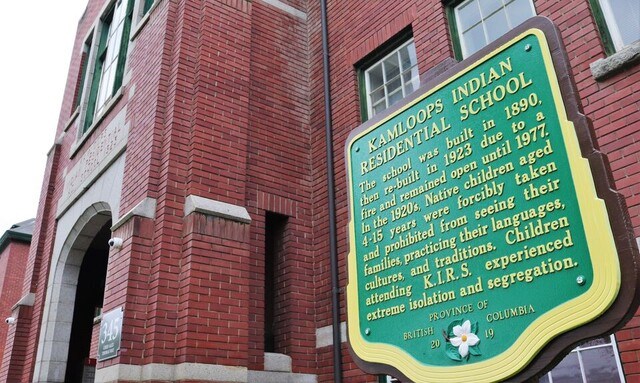The head of the Tk’emlups te Secwepemc First Nation says her band stands in solidarity with other Indigenous groups across Canada who have recently made announcements about unmarked burial grounds, and those planning to begin the search for buried remains.
“Our hearts go out to the other communities who have recently confirmed unmarked grave sites and missing children on the grounds of the former residential schools in Manitoba and Saskatchewan,” Kukpi7 Rosanne Casimir said in a news conference on Wednesday.
“Our hearts are with you and all communities affected.”
Casimir’s announcement on May 27 that ground-penetrating radar surveys on the grounds of the former Kamloops Indian Residential School had turned up the remains of 215 children kicked off a national dialogue.
The discovery, which Casimir said confirmed long-held beliefs about children having been buried at the school, prompted other First Nations to begin searching their lands for similar graveyards.
The Sioux Valley Dakota Nation in Manitoba said it has identified 104 “potential graves” near the Brandon Indian Residential School. In Williams Lake, First Nations leaders are preparing to investigate the grounds of the former St. Joseph’s Indian Residential School.
The province of Ontario has said it will commit $10 million to investigating and commemorating burial sites on the grounds of former residential schools, and officials in B.C., Alberta and Saskatchewan have since said they will take similar steps.
Casimir said more graves will be found.
“More missing children and unmarked graves will be confirmed,” she said.
“This was a knowing that survivors brought to the Truth and Reconciliation Commission — and the commissioners did their utmost to bring this to light as part of their work. I appreciate the many who have held fast to these horrific truths, however painful. They did not relent so that we may find and honour the missing children.”
Casimir said she wishes strength to the First Nations about to undertake investigations.
“We understand the deep wounds that these findings and investigations open up for survivors and intergenerational survivors,” she said.
“We stand with you as we reflect on this harsh truth that is part of the history we need all Canadians to acknowledge and to come to terms with so that we may collectively heal as a nation.”




